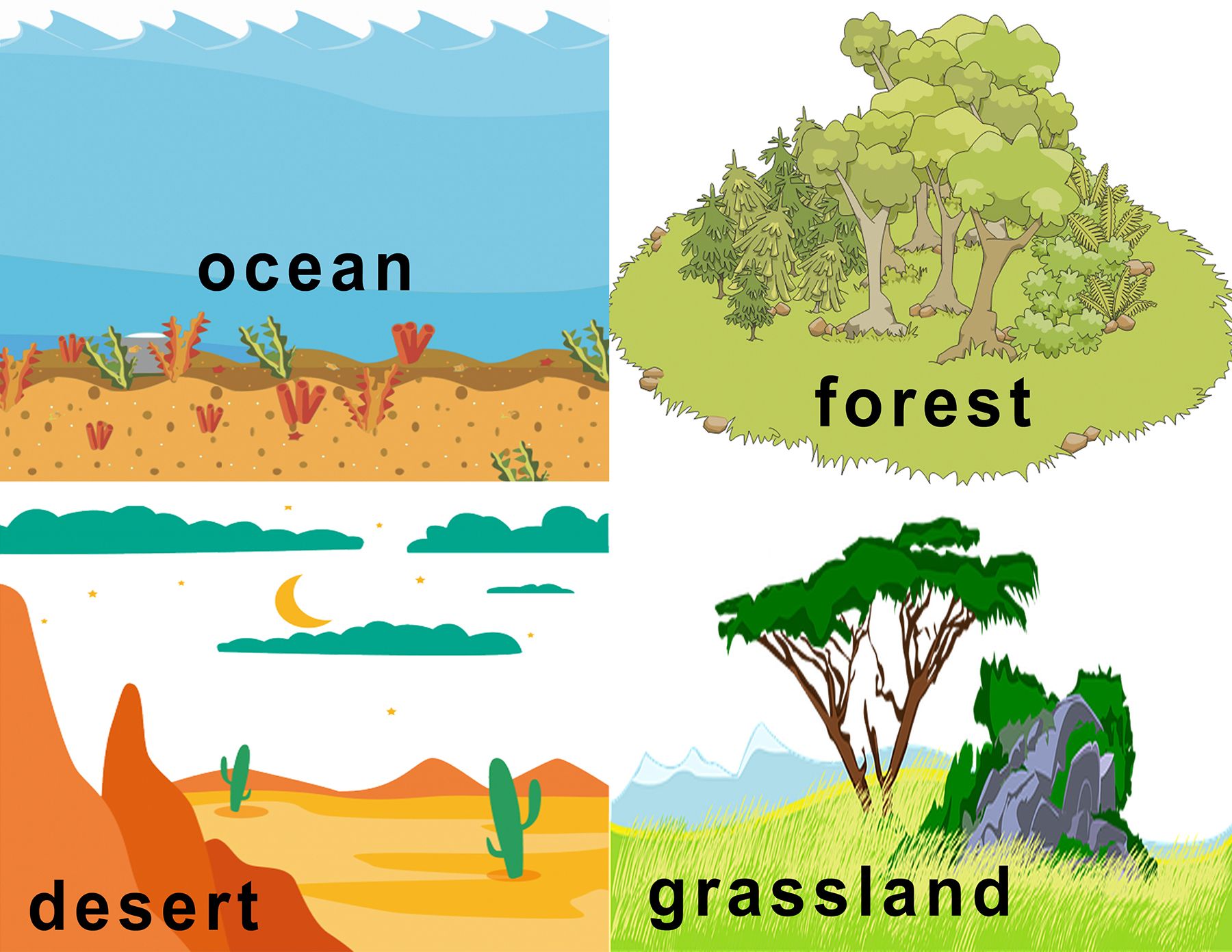
When it comes to the natural world, habitats play a crucial role in supporting various forms of life. From the vast rainforests to the expansive oceans, habitats provide a unique environment where plants, animals, and other organisms thrive. But what exactly is a habitat? In simple terms, a habitat refers to a specific area or place where a particular organism or community of organisms live and interact with their surroundings.
Understanding habitats is not only essential for ecological purposes but also for the overall preservation of biodiversity. Each habitat has its own distinct characteristics, including climate, vegetation, and species diversity, making them truly fascinating to explore. In this article, we will delve into 18 captivating facts about habitats that will give you a deeper appreciation for the intricate web of life that exists on our planet.
Key Takeaways:
- Habitats are diverse homes for countless species, from lush rainforests to the depths of the ocean. Protecting them ensures the survival of unique plants and animals.
- Human activities like deforestation and pollution endanger habitats, impacting the delicate balance of nature. Conservation efforts are crucial for preserving biodiversity and ecosystem services.
Habitats can be found in diverse ecosystems.
From lush rainforests to vast deserts, habitats can be found in a wide range of ecosystems all around the world.
Habitats provide homes for countless species.
Habitats are home to numerous animals, plants, and microorganisms, each playing a unique role in maintaining the delicate balance of nature.
Habitats support biodiversity.
The variety of habitats on Earth contributes to the incredible biodiversity we see today, allowing for the coexistence of different species.
Habitats can undergo dramatic changes.
Natural disasters, climate change, and human activities can greatly impact habitats, leading to changes in the species composition and overall structure.
Habitats are interconnected.
Habitats are not isolated entities but rather interconnected through ecological processes. What happens in one habitat can have ripple effects on others.
Habitat loss is a major concern.
Human activities such as deforestation, urbanization, and pollution have resulted in significant habitat loss, endangering countless species.
Habitats provide essential ecosystem services.
Habitats play a crucial role in providing services like clean air and water, nutrient cycling, and climate regulation, benefiting both humans and wildlife.
Habitats can be protected through conservation efforts.
Conservation organizations and initiatives work tirelessly to protect habitats and preserve the biodiversity they support.
Wetlands are vital habitats.
Wetlands, such as marshes and swamps, act as natural filters, improving water quality and providing essential habitats for a variety of species.
Coral reefs are incredibly diverse habitats.
Coral reefs are known as the rainforests of the ocean, teeming with a vast array of marine life and providing valuable resources for coastal communities.
Habitats are constantly adapting.
Through the process of natural selection, species within habitats adapt to changing environmental conditions, ensuring their survival.
Forests are essential habitats for many species.
Forests support an incredible diversity of plants, animals, and fungi, making them one of the most important habitats on Earth.
Habitats are influenced by abiotic factors.
Abiotic factors such as temperature, rainfall, and soil composition play a crucial role in shaping habitats and determining the species that can thrive within them.
Animals have adaptations specific to their habitats.
From camouflaging to mimicry, animals have developed unique adaptations that help them survive and thrive in their respective habitats.
Habitats provide natural resources for humans.
Habitats are a source of food, medicine, timber, and other resources that are essential for human well-being and livelihoods.
Some habitats are temporary.
Certain habitats, such as vernal pools and temporary ponds, appear only during specific seasons, providing breeding grounds for various species.
Habitats can be found in unexpected places.
From the depths of the ocean to the cracks of rocks, life has found a way to inhabit even the most extreme and seemingly inhospitable environments.
Habitats are worth exploring and protecting.
Understanding and appreciating the unique features of different habitats encourages their preservation, ensuring a sustainable future for all living beings.
These 18 fascinating facts about habitat highlight the importance of conserving and protecting the diverse ecosystems that make up our planet. By valuing and preserving habitats, we can contribute to the continued existence of countless species and maintain the delicate balance of nature.
Conclusion
In conclusion, habitat plays a vital role in sustaining and supporting life on Earth. It not only provides a home for various species but also contributes to the overall balance and health of our planet. Understanding and preserving these habitats is crucial for maintaining biodiversity and ensuring a sustainable future.By exploring the fascinating facts about habitat, we gain a deeper appreciation for the intricacies and wonders of the natural world. From the vastness of the rainforests to the fragile ecosystems of coral reefs, each habitat is unique and holds its own significance.As inhabitants of this planet, it is our responsibility to protect and conserve these habitats for future generations. By practicing sustainable living, supporting conservation efforts, and raising awareness about the importance of habitat preservation, we can make a difference in safeguarding the natural world.Remember, we are not separate from nature; we are a part of it. It is essential that we work together to ensure that habitats thrive, and the diverse array of species that call them home can continue to thrive as well.
FAQs
1. Why are habitats important?
Habitats are important because they provide homes and resources for various species. They also play a crucial role in maintaining the balance of nature and supporting biodiversity.
2. How do habitats contribute to the environment?
Habitats contribute to the environment by regulating the climate, preventing soil erosion, filtering water, and providing a habitat for pollinators and other essential species.
3. What are some examples of habitats?
Examples of habitats include forests, deserts, grasslands, wetlands, coral reefs, and freshwater ecosystems.
4. How can we protect habitats?
We can protect habitats by conserving water, reducing waste, supporting sustainable agriculture, advocating for protected areas, and promoting awareness about the importance of habitat preservation.
5. What is the impact of habitat destruction?
Habitat destruction leads to the loss of biodiversity, increased risk of species extinction, disruption of ecosystems, and negative impacts on the environment and human communities.
6. How can individuals make a difference in preserving habitats?
Individuals can make a difference by making sustainable lifestyle choices, supporting conservation organizations, participating in habitat restoration projects, and spreading awareness about the importance of habitat preservation.
Was this page helpful?
Our commitment to delivering trustworthy and engaging content is at the heart of what we do. Each fact on our site is contributed by real users like you, bringing a wealth of diverse insights and information. To ensure the highest standards of accuracy and reliability, our dedicated editors meticulously review each submission. This process guarantees that the facts we share are not only fascinating but also credible. Trust in our commitment to quality and authenticity as you explore and learn with us.


